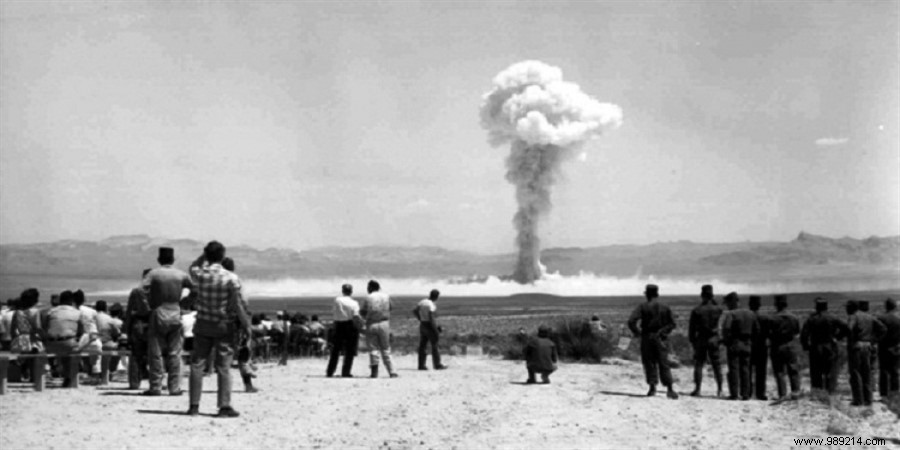At the beginning of February 2021, a cloud of sand dust crossed France. However, it contained traces of French nuclear tests in the Sahara in the early 1960s. After analyzing samples, researchers found cesium 137, a radioactive element which is reminiscent of the Chernobyl nuclear disaster in 1986.
On February 6, 2021, a cloud of sand dust crossed France from the Sahara. An article published by France 3 regions gave the floor to Pierre Barbey, radiation protection expert at the University of Caen. The specialist recovered a sample from the windshield of his car near Chapelle des Bois (Doubs) in the Jura massif. Also an advisor for the Association for the Control of Radioactivity in the West (ACRO), Pierre Barbey says he has clearly identified cesium 137.
" This is an artificial radioelement which is therefore not naturally present in the sand and which is a product resulting from the nuclear fission involved during a nuclear explosion", explained the interested party.
For Pierre Barbey, it fell 80,000 Bq (becquerels) per km² of cesium 137. The inhabitants of the Doubs department could have taken fright, given that the specters of the terrible nuclear disasters of Chernobyl (1986) and Fukushima (2011) are still present in their minds. However, this value is fortunately not synonymous with danger to health. According to the expert, the element in question has a 30-year lifespan . However, the latter loses half of its radioactivity every 30 years. Consider the fact that after seven 30-year cycles, only 1% of the radioactive substances remain.
ACRO believes that its study was not intended to identify a possible danger. Indeed, the researchers were certain that this would not be the case. On the other hand, it was a question of recalling that France practiced nuclear tests in other countries . Pierre Barbey recalls that today, populations live on these traces of cesium 137 still contaminating certain lands. Between 1960 and 1966, no less than 17 trials were carried out in the south of Algeria, a country still considered to be a French department at the time.
The very first nuclear test took place on February 13, 1960. Codename:Blue Jerboa (see below). With a power of 70 kilotons, this test had a magnitude three or four times greater as the bomb dropped on Hiroshima (Japan) in August 1945 by the United States.

After the signing of the Evian Accords in March 1962, experiments in the Sahara are only possible until July 1967. France then concentrates on Polynesia for its next tests, the very first of which took place on the atoll of Moruroa in 1966. However, the President of the Republic Jacques Chirac will announce the official end of French nuclear tests 30 years later, in 1996.